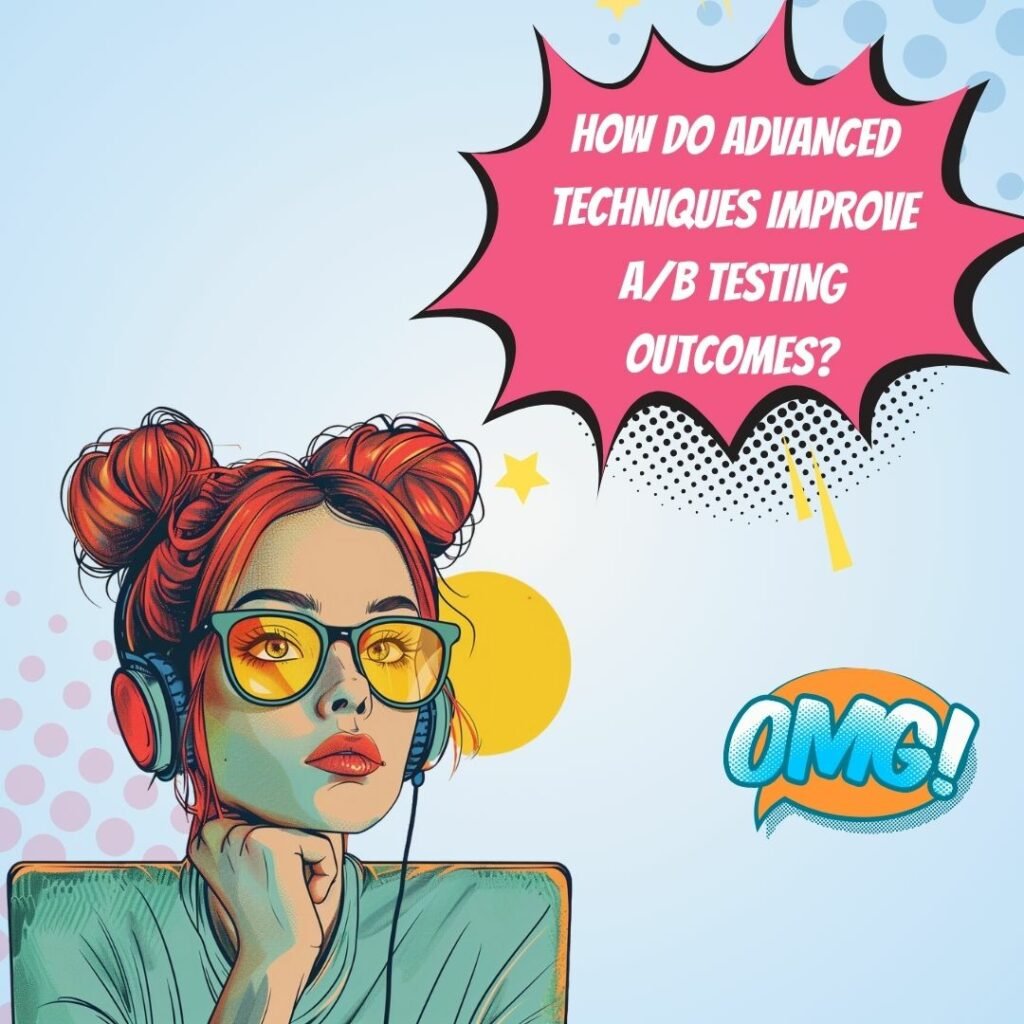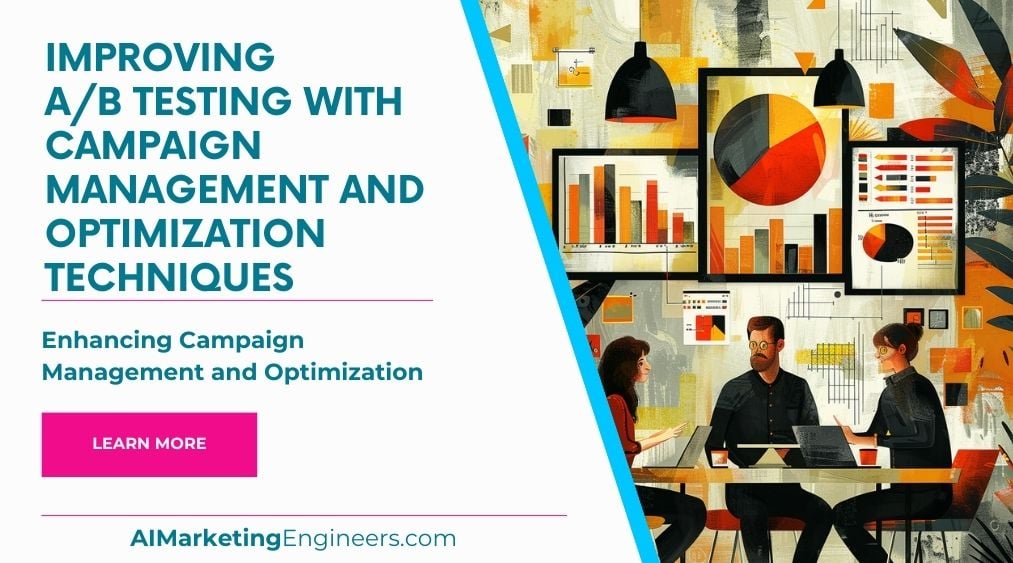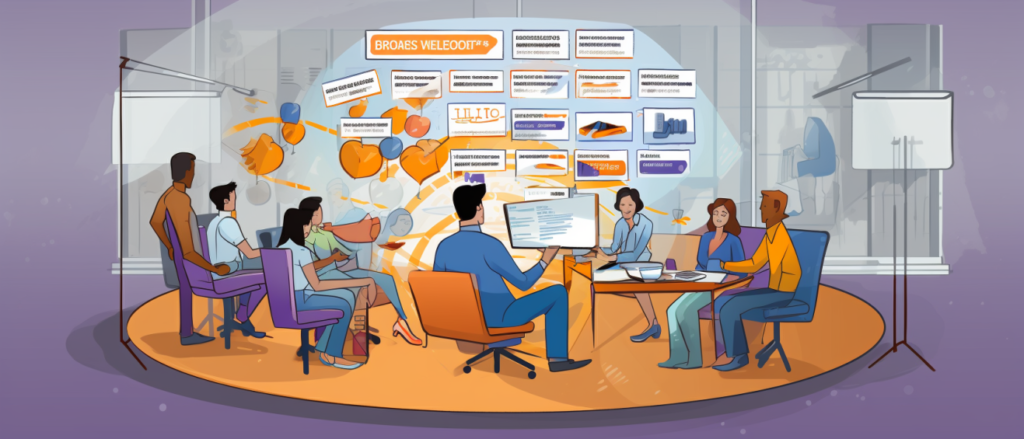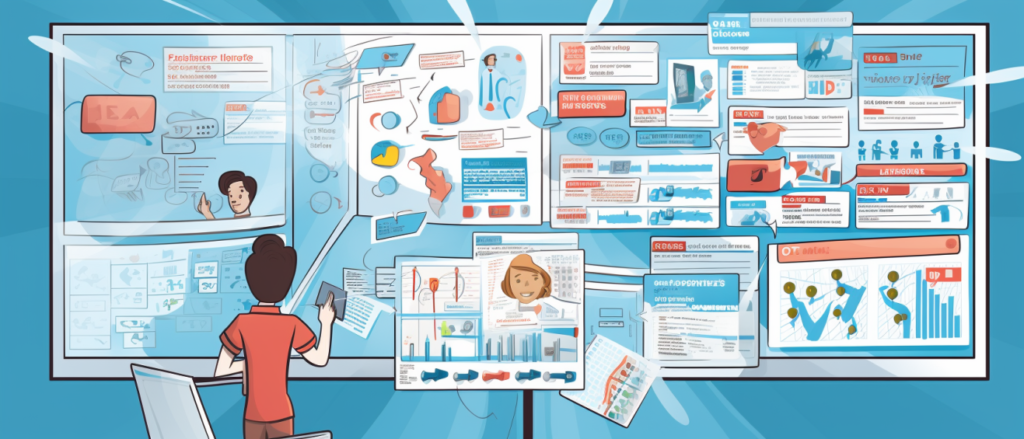Key Takeaways
✅ Establish Clear Objectives and Process: For A/B testing to truly work, setting defined goals is a must. With 44% of companies using A/B testing to boost conversion, ensuring your strategy avoids common pitfalls like overlapping tests is essential. Remember, it's not about testing for the sake of testing; it's about meaningful insights that lead to better decisions and, ultimately, sales.
✅ Embrace Advanced Techniques: Don't settle for basics when advanced techniques can change the game. Companies using methods like machine learning have seen up to a 15% increase in lead generation. It’s about stepping up the game with multivariate tests, personalized segments, and real-time analytics to keep not just pace, but to lead.
✅ Commit to Continuous Learning and Improvement: A/B testing is not a one-off tactic; it’s a continuous cycle of refinement. Constantly updating your strategy according to the latest data can improve marketing ROI by up to 20%. The ground rule? Learn, apply, measure, and adapt for an endless loop of marketing success.

Introduction
Are your marketing campaigns hitting the mark every time? Or do you sometimes feel like you're throwing darts in the dark, hoping for a bullseye? The truth is, trusty A/B testing and savvy campaign management can be the lightbulb in a murky room of guesswork. But, what if you could not only illuminate your marketing efforts but also project them straight onto the bullseye with more consistency?
Enter the world of advanced optimization techniques for A/B testing—strategies that can serve as your very own marketing GPS, steering you towards more clicks, conversions, and the kind of ROI that has you grinning ear to ear. In this exploration, we're hitching a ride on the latest trends and technological advancements that promise to revolutionize your campaign results.
With solid data and sharp analytics, could unlocking the secrets to sky-high conversion rates be within reach? Stick around as we delve into actionable insights and groundbreaking information that could flip the script on how you run your A/B tests. Want to maximize revenue, elevate your ROAS, or push your ROI into new territory? You're in the right place.
Understanding the Basics of A/B Testing
If you're even slightly familiar with the mechanics of digital marketing, you've likely heard of A/B testing. It's a fundamental method where two versions of a web page or app feature are compared to determine which one performs better. A/B testing isn't just a simple flip of a coin between 'A' or 'B.' It involves strategic planning and precise execution to yield reliable results. The process starts with a hypothesis and involves randomly splitting your audience to measure responses accurately. By isolating variables, you can identify what changes impact user behavior. Effective campaign management has the potential to dramatically refine the precision and usefulness of A/B test results.
Leveraging Advanced Campaign Management Techniques
Advanced campaign management techniques bring robust tools to the table for enhancing A/B testing. Multivariate testing, for instance, broadens the horizon beyond simple A/B comparisons by evaluating multiple variables simultaneously. This approach helps uncover more nuanced user preferences and behaviors. Detailed user segmentation and personalization further enhance the effectiveness of your campaigns. By gaining clear insights into your audience, you can tailor each element of your campaign to resonate with specific customer profiles. These techniques not only improve the accuracy of your tests but also enhance overall campaign performance.
Optimization Through Bayesian Statistical Methods
Optimization is a critical aspect of improving A/B testing, and Bayesian statistical methods play a significant role in this process. Think of Bayesian methods as a navigational compass in the complex journey of A/B testing. These methods allow marketers to draw on past data to make informed predictions about future performance. Bayesian optimization helps in refining hypotheses and testing strategies, ensuring more reliable results. By integrating these statistical methods, marketers can enhance the precision and impact of their tests. This approach leads to more effective decision-making and improved ROI.
Real-Time Adaptation with Multi-Armed Bandit Algorithms
Multi-armed bandit algorithms offer a dynamic approach to campaign optimization by shifting resources to the most effective strategies in real-time. Unlike traditional A/B testing, which requires waiting for results before making changes, these algorithms allow for continuous adjustment. This real-time adaptation maximizes ROI from the moment strategies are deployed. Multi-armed bandits learn from ongoing data, optimizing resource allocation without halting the campaign. This method is particularly useful in fast-paced digital marketing environments where quick adjustments are crucial. Implementing these algorithms can significantly enhance the effectiveness and efficiency of your marketing efforts.
Practical Steps to Advanced A/B Testing
Taking your A/B testing to the next level involves a structured approach with practical steps. Start by defining clear objectives for your tests and identifying the elements you want to compare. Select the right metrics to measure success, ensuring they align with your overall campaign goals. Set up multivariate tests to examine multiple variables and their interactions. Effective user segmentation begins with collecting and analyzing extensive data to create tailored experiences. Automation and machine learning can further enhance this process by detecting patterns and insights that would take humans much longer to identify. These steps ensure a more thorough and impactful testing process.
Future Trends in A/B Testing and Campaign Optimization
The future of A/B testing and campaign optimization is closely tied to advancements in artificial intelligence and machine learning. As algorithms become more sophisticated, they are capable of real-time learning and adjustment. This means that future A/B tests will be more adaptive and responsive to user behavior. The challenge lies in staying up-to-date with these technologies and finding creative ways to apply them to marketing. By leveraging AI and machine learning, marketers can uncover deeper insights and drive continual improvements in user experience and conversion rates. The evolution of these technologies promises to revolutionize the way we approach digital marketing and optimization.
AI Marketing Engineers Recommendation
Recommendation 1: Incorporate Machine Learning Algorithms for Predictive Analysis in A/B Testing: In the world of marketing, decisions backed by data are the key to success. One way to enhance Improving A/B Testing is by leveraging machine learning algorithms to predict outcomes and optimize tests. By using these technologies, businesses can more accurately forecast which variant will succeed before rolling it out on a large scale. For instance, machine learning can analyze historical data and user behavior to identify patterns that human analysts might miss. The benefits? Reduced guesswork and faster decision-making. A report by McKinsey confirms that companies using AI for marketing personalization report up to a 15% increase in revenues. So, utilizing predictive analytics can significantly boost your campaign's effectiveness.
Recommendation 2: Multi-armed Bandit Approach to Optimize A/B Testing Campaigns: With the ever-evolving marketing landscape, are we moving past the standard A/B test? Enter the multi-armed bandit approach—an advanced technique gaining traction. This strategy dynamically allocates traffic to different variations based on their performance in real-time, unlike traditional A/B testing, which involves a static division of traffic. By shifting resources to the better-performing option as the campaign unfolds, businesses minimize losses and capitalize on what works sooner. The application of this model has been shown to improve conversion rates by up to 30%, according to a case study by VWO. It's cutting-edge, it's efficient, and it can be your game-changer for Improving A/B Testing efforts.
Recommendation 3: Embrace A/B Testing Automation Tools for Real-time Optimization: Time is an asset you can't afford to waste. That's why one of the key pieces of advice for businesses is to adopt automation tools specifically designed to facilitate and enhance A/B tests. Tools like Google Optimize, Optimizely, or Adobe Target can automatically adjust and serve the best-performing variation to users. They not only streamline the testing process but also provide invaluable insights with comprehensive analytics and can turn those insights into action instantaneously. A Forrester study found that optimization tools can lead to a 200% uplift in conversion rates. So, adopting these tools isn't just about staying ahead; it's about harnessing the power of real-time data for tangible growth in your marketing outcomes.
Relevant Links
- Enter the Gateway to China's Digital Sphere with Our WeChat Marketing Guide
- Mastering the Art of K-Pop Video Marketing in South Korea
- Boost Your Brand on Russia's Premiere Social Network with Our VK Marketing Playbook
- Unlock German Market Insights and Craft Winning Strategies with Our SEO Blueprint for Google.de
- Maximize Ad Impressions and Click-Through Rates for Stellar Campaign Reach
Conclusion
In the rapidly evolving world of digital marketing, A/B testing has proven to be a crucial tool for understanding customer preferences and improving campaign performance. However, blending A/B testing with advanced techniques of campaign management and optimization is like adding a turbocharger to an already powerful engine. Multivariate testing fine-tunes our insights, user segmentation and personalization speak directly to individual customer needs, and automated testing alongside machine learning optimizes these processes in real-time.
Beyond just the technical jargon lies a world of opportunity. Companies that have embraced these sophisticated methods are witnessing significant gains—a testament to their effectiveness. The leap from traditional A/B testing to these state-of-the-art techniques may seem daunting, but the rewards are clearly evidenced by the successful brand stories shared in our case studies.
The rise of AI and machine learning suggests that this is just the beginning. As we look to the future, the question now is not if, but how swiftly can businesses integrate these optimization techniques to remain competitive. The evidence stacks up in favor of those ready to step up their game. With statistical sophistication and algorithms in your marketing toolkit, the sky is the limit. So why wait? Let's embrace the cutting-edge and propel our marketing strategies into a future where the results speak louder than ever before.
FAQs
Question 1: What is A/B testing?
Answer: A/B testing, also known as split testing, is a powerful technique used in data-driven marketing to optimize campaigns and improve overall performance by comparing two versions of a webpage or email to see which one performs better.
Question 2: Why is A/B testing important?
Answer: A/B testing allows you to make informed decisions and enhance your business outcomes by discovering what influences conversion rates and user interaction.
Question 3: What are the key elements to test in A/B testing?
Answer: Focus on testing elements like headlines, images, call-to-action buttons, and subject lines since these can significantly affect user decisions and conversions.
Question 4: What is multivariate testing?
Answer: Multivariate testing is about checking various elements at once to understand the winning combination for the best conversion rates.
Question 5: How does segmenting your audience enhance A/B testing?
Answer: Segmenting lets you get specific by targeting certain groups, which can make your A/B tests more relevant and powerful.
Question 6: What is sequential testing?
Answer: Sequential testing means running a series of tests in a particular order, using the insights each time to improve your next move.
Question 7: How can machine learning enhance A/B testing?
Answer: Machine learning helps by quickly crunching big data and spotting trends that might slip past us, making optimizations faster and smarter.
Question 8: What are the essential steps for setting up A/B testing?
Answer: To set up A/B testing properly, you should set clear goals, have a reliable process, and change one thing at a time to really understand what's working.
Question 9: What are common mistakes to avoid in A/B testing?
Answer: Avoid mess-ups like a confusing plan, mixing up too many changes at once, or testing at the wrong times, which can throw off your results.
Question 10: How can you ensure the relevance of your campaign?
Answer: Keep it significant by presenting your material in a way that resonates with your audiences and by crafting your tests to fit their preferences.
Academic References
- Shah, D., & Murthi, B. P. S. (2011). Building Brand Value Online: Implications of the Web 2.0 for the Marketing. Journal of Direct, Data and Digital Marketing Practice, 13(1), 48-60. This paper discusses how the emergence of Web 2.0 has transformed online brand management and emphasizes the need for rigorous testing and optimization of online marketing campaigns, spotlighting A/B testing as a key component.
- Kohavi, R., & Thomke, S. (2017). The Surprising Power of Online Experiments. Harvard Business Review, 95(5), 74-82. In this article, Kohavi and Thomke extoll the substantial benefits of online experimentation, notably A/B testing, in driving business decisions and improving customer experience through definitive, evidence-based results.












